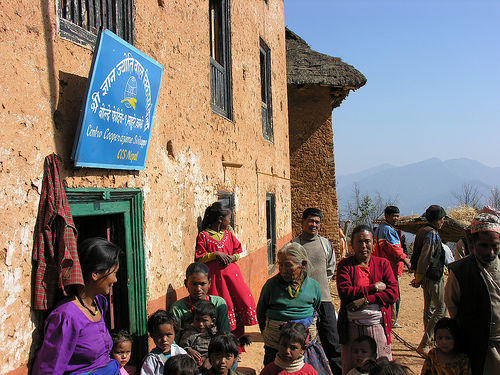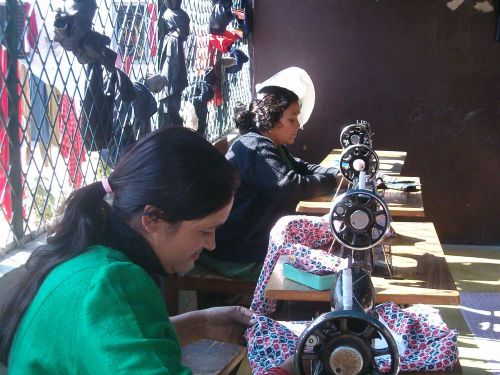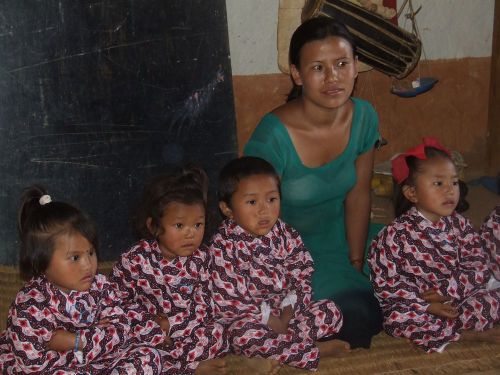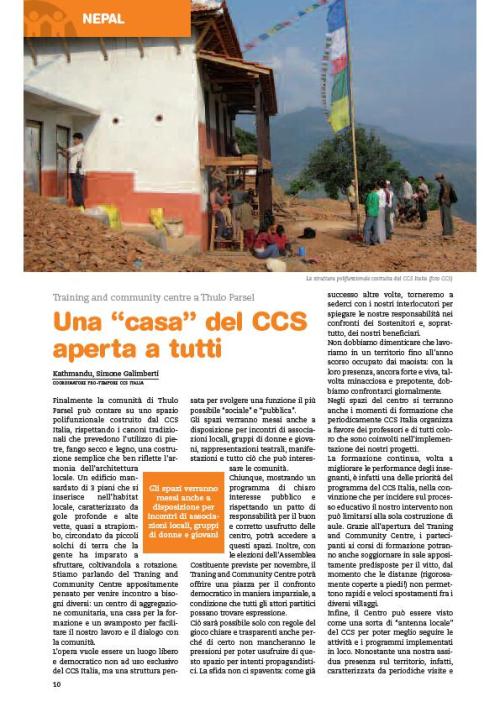We received
Dear Friends
The worries expressed by the people from the villages where we began the projects in 2003 confirms the letter delivered to SWC (Social Welfare Council) last september in which I denounced Centro Cooperazione Sviluppo (CCS) INGO for not implementing the agreements related to education, health and community development in Kavre.
From then it seems that Centro Cooperazione Sviluppo INGO is going to cancel all projects in Kavre, only leaving some formal activities (training, coordination) throughout the local DEO.
In fact they are replacing Kavre sponsored children with new ones located in Kathmandu.
Of course it easier for these people to work few meters from the office than to go in remote and disadvantaged area as Timal (Kavre) it is.
But it is absolutely incorrect to use money which Italian sponsors donated for Kavre children to other programs.
I stated this wrong attitude in my letter (see below) as well as the huge increasing of office and staff expenditures which are badly affecting the activities for the beneficiaries.
It sounds also quite amusing that the new officers of CCS Centro Cooperazione Sviluppo INGO have been able to buy private cars only after seven months of working in the organization. In short, I believe, that in little less than one years and half they have destroyed four years work, confidence, projects and hopes for the communities of Kavre for their incapacity and wasting of people money. Below the letter I sent to SWC.
To The Members Secretary of
Social Welfare Council
Lainchor
Kathmandu
Dear Sirs
As you know I was the former Country Director (since January 2007) of CCS (Centro Cooperazione Sviluppo) Italy INGO and I signed with SWC and CCS Cooperation & Development Nepal (local and implementing NGO) three agreements regarding education, health and electrification for the benefits of the deprived and isolated community and children in Timal area (Kavre District).
In the last days I went in the community where the projects should be implemented and I found among people, teachers and children deeply concern about the state of the projects. During my visit in the community, stakeholders told me that the project (especially education) has been severely cut and other (health and electrification) are reduced to merely trainings and reports.
They submitted to me a list of programs cancelled (as appears to compare the report presented in October 2006 by CCS Italy (under my direction) to SWC (attached).
-food integration for around 800 children enrolled in Bal Bikas Kendra (ECDs) founded by Cooperation & Development Nepal NGO-
-rent of Bal Bikas Kendra (ECDs) before supported and founded by Cooperation & Development Nepal NGO-
-coaching classes for secondary schools-
-text books for sponsored children sponsored by CCS in six and seven classes in seven secondary schools-
-distribution to all children in primary schools of copy books, pens, pencils and other didactical materials twice at year for around 5000 children sponsored by Cooperation & Development Nepal NGO-
-teachers salary for 14 teachers in secondary schools
– high secondary school (10+2) built by Cooperation & Development Nepal NGO and community (in 2006) support–
Moreover even the buffalo project directed to the poorest families in the community has been severely reduced.
We heard about plan to further reduce the support of Timal children for 2009 as well as not start new schools or ECDs building as well all the health programs.
Furthermore, the stakeholders informed me that CCS Nepal has been excluded by any process-making decisions in clear opposition to nepali rule and SWC norms which stated the local NGO should be the implementing agency and should be empowered being formed by local people.
When community protested against reduction of activities, the CCS Italy officers replied they will stop all programs in Timal area and actually they contacted political representatives to find out any location and NGOs (good for them) to replace CCS Nepal. It seems clearly the worst way to find out partners, places, and beneficiaries for new projects. You must consider CCS Nepal is deep rooted in the projects community and thanks to it all projects were proposed and initiated and fund collected. They worked very hard during the conflict to implement them. This happened thanks to transparency, community rooted activities and capacity.
As you know CCS Italy INGO fund come from children sponsorship made by Italian people who likes to sustain their education, health and life. At the end of 2007 (as document attached) the children sponsored were 3558. Around 3100 are located in Thimal and they should receive the greatest amount of donations. As the official CCS Head Quarter budget attached (on www.ccsit.org) it appears that 45,5% of the amount donated by sponsor it has been used in Italy for administrative costs (in 2006 only 32%)
In Nepal arrived euro 356.338 only euro 30.000 less than 2006 budget (as document attached and auditing given to SWC) due to the higher HQ management costs. From this amount only 217.550 have been used for projects not only in Thimal but also in Chitwan (around 400 children sponsored, and in Kathmandu (where is easily to work for the new recruited CCS Italy officers.
CCS Italy so stated that euro 150.000 (near the half of all amount sent in Nepal) has been used to pay officers, office and other facilities.
Stakeholders informed me that new appointed officers receive the following monthly salaries:
-Chanda Rai, country director monthly salary nrs.150.000
-Buddhi Man Shestra education manager, nrs. 90.000;
-Lachi Singh, health manager nrs. 90.000;
-Vishnu Shestra accountant, nrs 90.000;
-Rajesh Shestra accountant, nrs. 90.000;
-deputy country director nrs 250.000 (exp)
(This amounts are far higher than the salary given to the new appointed Nepali President of Republic and Prime Minister).
Other officers (16) receive salary ranging from Nrs. 40.000 to 20.000.
All this top officers has been provided by a lab top (which cost the amount of children food integration for six months of 800 children cut by them) and cars, health schemes, phones, and other facilities.
As you know as the Report presented to SWC in 2006, the number of employed of CCS Italy INGO were six, and they managed more activities than now. Because the intention was to enforce the capacity of local NGO and excluded people (Tamang) from the projects area.
It must be noted and evaluate by SWC that the projects running and signed have not been implemented because the amount stated has not been used for the benefits of Nepali children and people and not given to the implementing local NGO as nepali law, agreements articles and SWC rules stated.
With best regards
Dr. Enrico Crespi
Budhanilkanta
Kathmandu
05 September 2008
 In spite of the political crises, it seems that the SWC – Social Welfare Council (newly reformed) is operating in evaluation and monitoring INGO projects.
In spite of the political crises, it seems that the SWC – Social Welfare Council (newly reformed) is operating in evaluation and monitoring INGO projects.


















